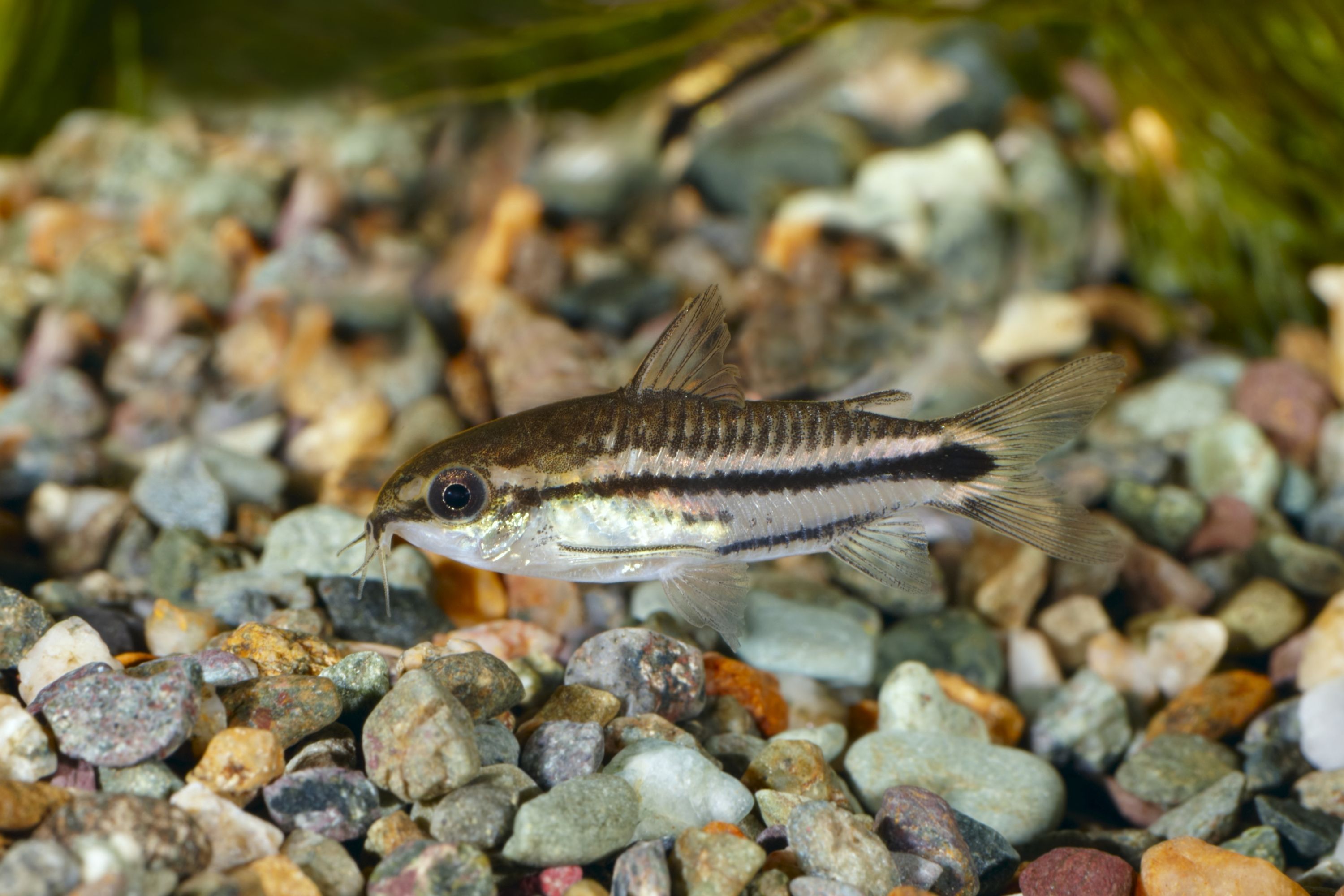Pygmy corydoras
(Corydoras pygmaeus)

Description
The pygmy corydoras or pygmy catfish (Corydoras pygmaeus) is a tropical and freshwater fish belonging to the subfamily Corydoradinae of the family Callichthyidae. It originates in tropical inland waters in South America, and is found in the Madeira River basin in Brazil. The pygmy corydoras is a silver-colored fish, with an unbroken black line that runs horizontally along the center of the sides of the fish from the tip of its snout to its caudal peduncle. It has a second thin black line along the lower part of the side of the body, from behind the ventral fins and continuing into the tail. The top part of the body has a light black or dark gray shading that starts on the top of its snout and ends at the tail. Newly hatched fry have vertical stripes along the sides of their bodies that fade by the end of their first month, when the horizontal stripes of the adult fish begin to appear. The maximum length of the species is about 3.2 centimeters (1.3 in), but typical adult sizes are 1.9 centimeters (0.75 in) for males and 2.5 centimeters (1.0 in) for females. In addition to their larger length, females are also rounder and broader than males, especially when they have eggs. Young fry grow rapidly after hatching, reaching 13 millimeters (0.51 in) in six to eight weeks. The pygmy corydoras is widely distributed in inland waters in Peru in tributaries of the Nanay River, in Ecuador in tributaries of the Aguarico River, and in western Brazil in tributaries of the Madeira River. The holotype was obtained from Calama, Brazil, along the Madeira River near the mouth of the Ji-Paraná River. The pygmy corydoras lives in a tropical climate in water with a 6.0 - 8.0 pH, a water hardness of 2 - 25 dGH, and a temperature range of 22–26 °C (72–79 °F). It feeds on worms, benthic crustaceans, insects, and plant matter. The pygmy corydoras lays approximately 100 eggs at a time. The female holds 2-4 eggs at a time in a pouch formed by her pelvic fins while they are fertilized by the male, which takes about 30 seconds. The female swims to a safe location with the fertilized eggs, where she attaches the sticky eggs to a surface, where they will remain.
Taxonomic tree:







